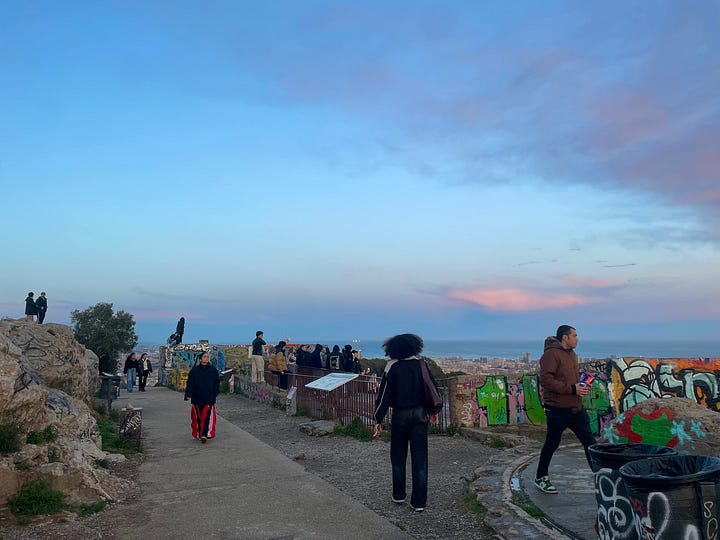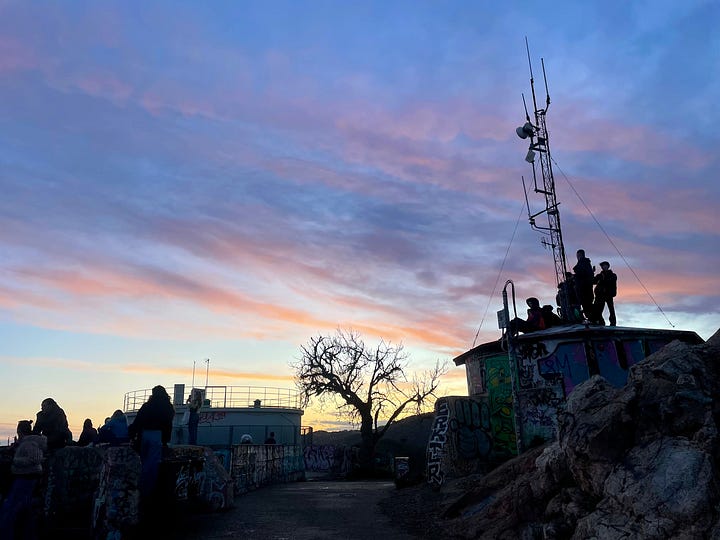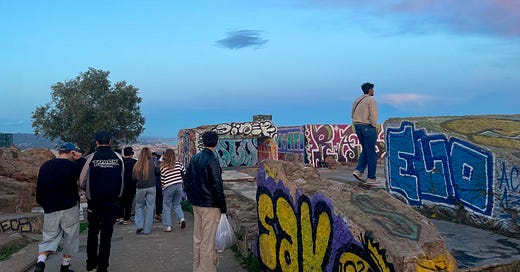Barcelona’s Bunkers
In the scarce periods when the Catalan rain isn’t reminding me that my fate is forever tethered to British standards – the (iso)bar is low – I have been desperately trying to nab some brief moments of cultural enlightenment to prove that my final memories here weren’t entirely made up of microwaving Spanish tortilla from the local Carrefour. I’m pleased to say I did in fact make it to some very noteworthy locations in the marvellous metropole of Barcelona this week, one of which has a truly fascinating background.
Los Bunkers del Carmel
If anyone has read my article on Sarajevo’s bobsleigh track, you’ll know I’m partial to a graffiti-covered reworked military locale with an Olympic-themed history. Enter los Bunkers del Carmel. Situated at the top of Turó de la Rovira, a hill in the Carmel neighbourhood, the concrete structures offer a rich assortment of varyingly levelled ledges to soak up a panoramic view of the Barcelona cityscape.
A brief history
Misleadingly, Los Bunkers del Carmel lack any sort of bunker itself. The ‘bunkers’ were constructed in 1937 as a small series of anti-aircraft fortifications during the Spanish Civil War. Their original purpose was to provide shelter for both weapons and military personnel, and a defense base against attacks by fascist aviation.
Once symbols of survival, bunkers now tell a story of shifting purposes and a post-war past shaped by class struggle. During the Franco regime of 1939-1952, an era of ‘Silenced Famine’ and extreme poverty, poorer members of society began to inhabit the bunkers. Often these were immigrants who had swept into the city in vast numbers from both within Spain and surrounding countries. By the 1960s, the newfound Los Cañones shanty town housed over 3,000 people and in 1972, with 100,000 slum dwellers city-wide. After decades of harsh conditions and social marginalisation, the El Carmelo Residents’ Association formed to stand up to local authorities and claim their rights to improved basic living services.
But the settlement was short-lived. Preparation for the Barcelona Olympic Games of 1992 saw the local government implement top-down regeneration policies in a bid to straighten up the city’s international image. Members of the Los Cañones neighbourhood who had not already relocated in the late 1970s to a housing estate further north at Canyelles, as well as populations from the other remaining shantytowns of Tres Turons (Three Hills), were (often involuntarily) rehoused into flats across the city. Thus marked the systematic wiping out of the barracas from the Barcelona landscape, but the city’s shantyism and post-war urban unrest are long engrained in its history and many ex-residents want to see these forgotten neighbourhoods commemorated and recognised by the Catalan government.
The Bunkers today
It was impressed upon me that before I left, I had to experience watching the sunset from top of Turó de la Rovira. This is what the bunkers stand for today; after a couple of decades of post-Olympics neglect, the site has surged into public attention as a trendy tourist spot for its 360º view and architectonic aesthetic.
After a bus ride up the hill and a quick trip to the local store for some cider and ice cream, my friend and I set off to explore the infamous viewpoint for ourselves. Unbeknownst to us, the gates to the bunkers are closed on the weekend, so some careful manoeuvring over some hostile steel bars added further physical activity to the evening’s climb.


The view really was breathtaking. To the south, the sunset had just hit that stage of melting, when the soft orange glows like embers through ashy streaks. To the east, a blush plume of cloud set against the baby blue sky. The sight was made the more colourful by the galactic graffiti gracing the stony swathes. Lovers’ names in bloated fonts and words in black, green, and bubble-gum pink made the bunkers at sunset a rainbow playground from all angles. Among us, bands of Erasmus students sat in lines with legs swinging over concrete edges; local teenagers propped themselves up with a beer against the satellite pole.
‘¡Hola!’ A familiar tone splintered the peace. The gates had been shut. The bunkers were closed. ‘Vamos chicos. El sitio está cerrado’. The local policeman shuffled us out, an army of tipsy ants trotting down the hill. No one minded much, friends continued chattering – gangs and groups and giggling couples – blithe American voices gurgling with glossy Spanish vowels. The sun had set now, hazy city lights on midnight blue. The scent of tobacco hung in the cold air; spirit bottles clinked, and handheld speakers choked out glitching house music.
We walked back down the winding path and caught the bus home. And so ended my trip to los Bunkers del Carmel. Short and sweet, but worth a mention.





